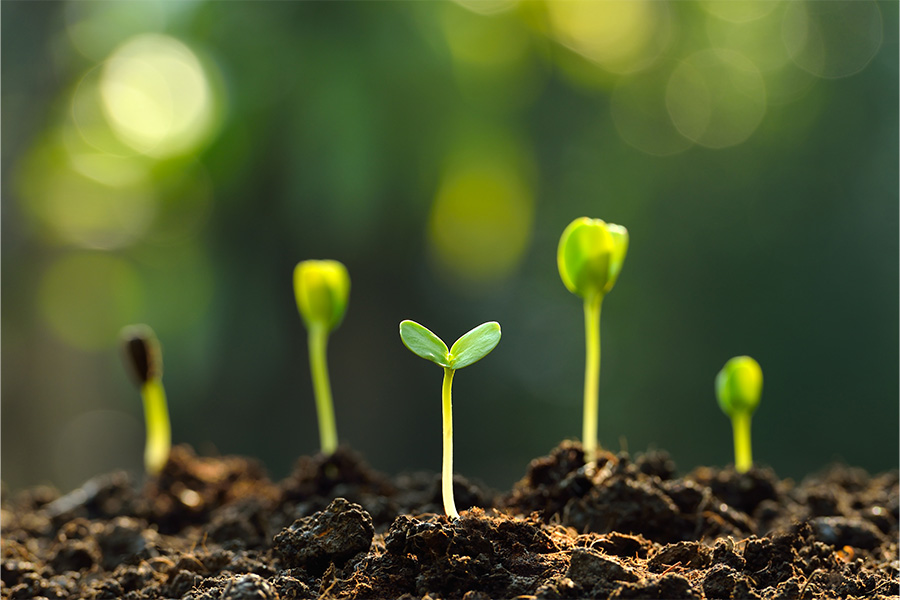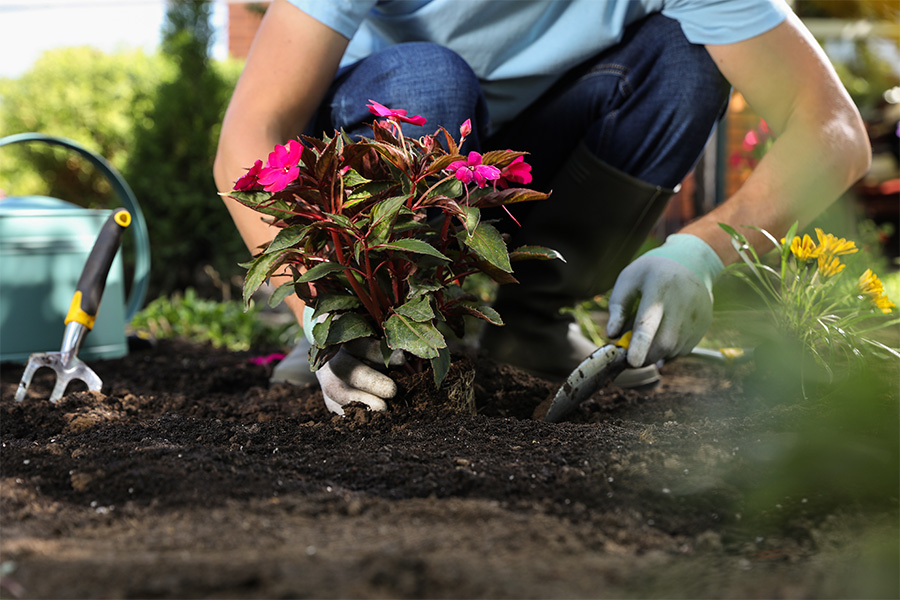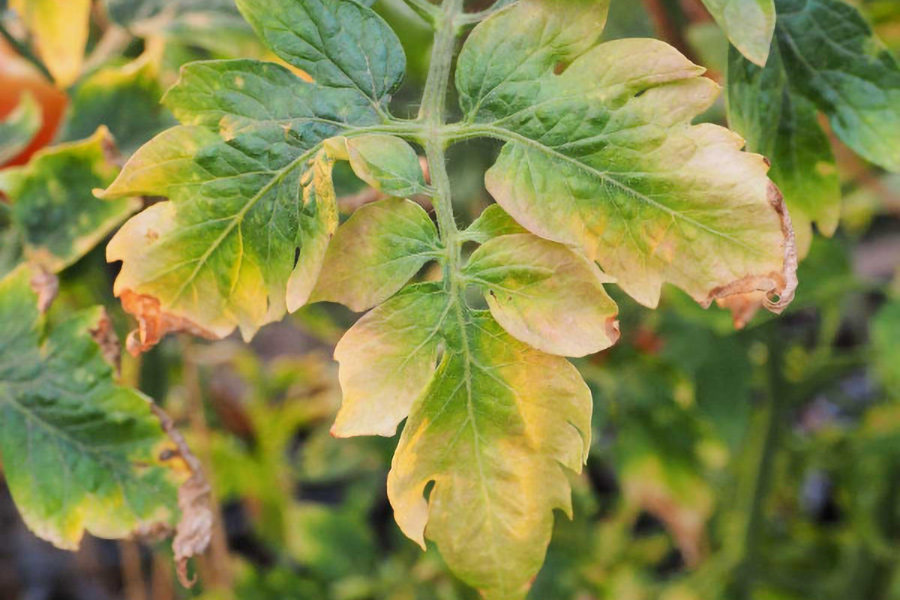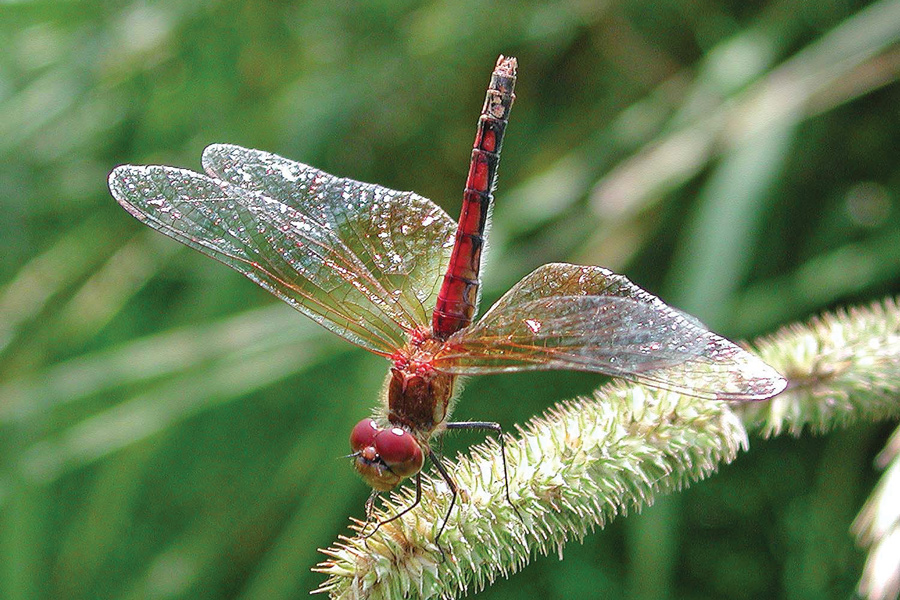Lawn and Garden
-

A number of plants, particularly vegetables, annuals, and herbs, can be grown
from seed. There are many advantages to propagating plants from seed. This publication provides information on seed selection, materials, seeding techniques, thinning, and transplanting. A step-by-step, quick reference guide is also included.Bodie V. Pennisi and Sheri Dorn
|
-

Hort Scape streamlines the bidding process once the user builds a coded database of plants, including common and botanical names, plant sizes, plant costs, and per plant installation costs. Then, using the bid estimator, the user inputs the plant codes and quantities for the plants used on a particularly job, and the associated information on each plant is brought over from the database to the estimator. Other sections of the estimator calculate costs of bed amendments, fertilizers, turfgrass installation, grading, watering, edging, pre-kill with herbicides, plant removal, and clean-up. All these costs are then transferred to a bid summary sheet which shows labor, material and equipment cost for each task performed. The bid summary shows direct job costs, bid price, break-even price, profit on the job and overhead recovery. For more information, see http://www.hort.uga.edu/extension/programs/hortmanage.html
Bodie V. Pennisi
|
-

Proper planting is essential for healthy, vigorous growth of ornamental plants in the landscape. It assures rapid plant establishment by providing a favorable environment for the developing root system. This publication offers step-by-step guidelines that will help you achieve planting success.
Sheri Dorn
|
-

Pesticide and fertilizer recommendations are often made on a pounds per acre and tons per acre basis. While these may be applicable to field production of many crops, orchardists, nurserymen and greenhouse operators often must convert these recommendations to smaller areas, such as row feet, square feet, or even per tree or per pot. Thus pints, cups, ounces, tablespoons and teaspoons are the common units of measure. The conversion is frequently complicated by metric units of measure. This publication is designed to aid growers in making these calculations and conversions, and also provides other data useful in the management, planning and operation of horticultural enterprises.
Bodie V. Pennisi
|
-

This brief guide covers nutrient deficiencies and their symptoms in common vegetables. Makenzie English, Horticulture Program Assistant, is co-author on this publication.
Bob Westerfield
|
-

Citrus plants are very versatile around the home and may be used as individual specimens, hedges or container plants. Their natural beauty and ripe fruits make them attractive additions to the South Georgia home scene. Cold-hardy varieties that receive recommended care may grow successfully in the coastal and extreme southern areas of the state (and to a lesser degree in more northern locations).
Bob Westerfield and Jake Price
|
-

This publication contains photos and descriptions to help identify pests in Southeastern landscapes. Beneficial and pest insects are both included. NOTE: This publication is designed with tabs and cutouts that are not necessarily apparent when printed on a home printer.
S. Kris Braman
|
-

This resource is a comprehensive guide for residents interested in growing pecan trees in Georgia.
Lenny Wells, William G. Hudson, and Jason H. Brock
|
-

Blueberries are becoming the state fruit of Georgia with considerable acreage planted. Blueberries have many pest challenges and a current invasive pest challenge from spotted wing drosophilia (SWD). While efforts are underway to release new biocontrol agents for SWD, we still know little about the natural enemies in blueberry systems. Here we provide an overview of common natural enemies and conservation strategies for preserving beneficial species in blueberry systems. The work was funded by the NRCS to provide new information on natural enemies and pollinators and help with design and implementation of habitat management concepts.
Bodie V. Pennisi, Jason Schmidt, Sarah Miranda Rezende, and Subin Babu Neupane
|